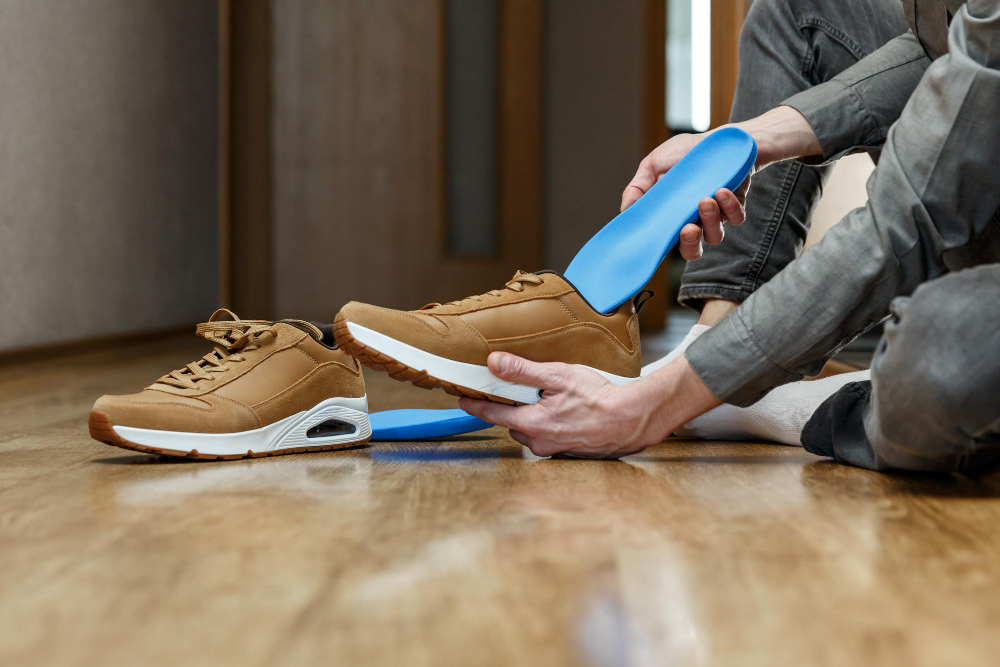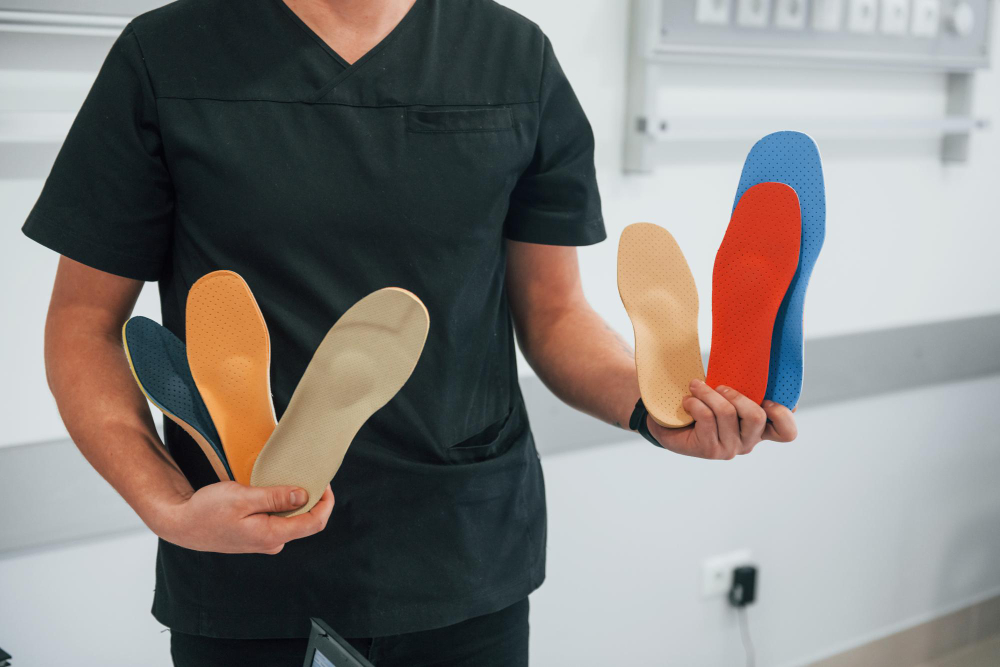Ankle sprains are the most common sports-related injury. Unfortunately, studies have suggested that approximately 75 per cent of athletes who sprain an ankle will suffer a recurring sprain. Chronic instability of the ankle can also occur after a severe ankle sprain. The high incidence of ankle instability after an initial sprain is because most ankle sprain are incorrectly treated. People with high arches or heels that turn inwards are predisposed to ankle sprains. Looseness of the ankle joint and sub-talar joint is caused by a stretching or loosening of the anterior talofibular ligament and the calcaeneofibular ligament.
Caring for Ankle Sprains
Follow-up care for a lateral ankle sprain should include the use of immobilization devices designed to allow early weightbearing in order to encourage the healing of ligaments and restore the ankle to the most stable position. Once the initial swelling has decreased, a careful exercise program should be established to regain strength in the muscles of the leg and to restore balance. Exercises to strengthen the muscles that evert and invert the ankle should be included, as well as excercises to improve ankle proprioception. If the instability is severe, bracing may be needed initially to gain support for the ankle and prevent additional ankle sprains. Non-steroidal anti-inflammatory drugs (NSAIDs) can be used to reduce pain and inflammation.
Chronic Ankle Instability and Ankle Arthritis
People with ankle instability are prone to repeated ankle sprains, which can increase the chances of developing ankle arthritis later in life. People with chronic ankle instability often repeatedly turn their ankles on uneven surfaces or while participating in sports, and may experience feelings of instability and persistent discomfort. Chronic recurrent instability of the ankle can also lead to bruising of the cartilage of the talus. Bone spurs may develop around the front and sides of the ankle.
Ankle Instability and Foot Orthotics
There is considerable research to support that custom foot orthotics greatly benefit persons with chronic sub-later ankle instability. The sub-latar joint is where the foot typically pronates or supinates. Orthotics work to stabilize the joint and prevent further ankle sprains. Good quality supportive footwear also helps to prevent further ankle sprains. Studies have also suggested the use of foot orthoses can help to enhance balance and proprioception by stimulating the sensors on the sole of the foot while also increasing the surface area of contact between the foot and the ground.






